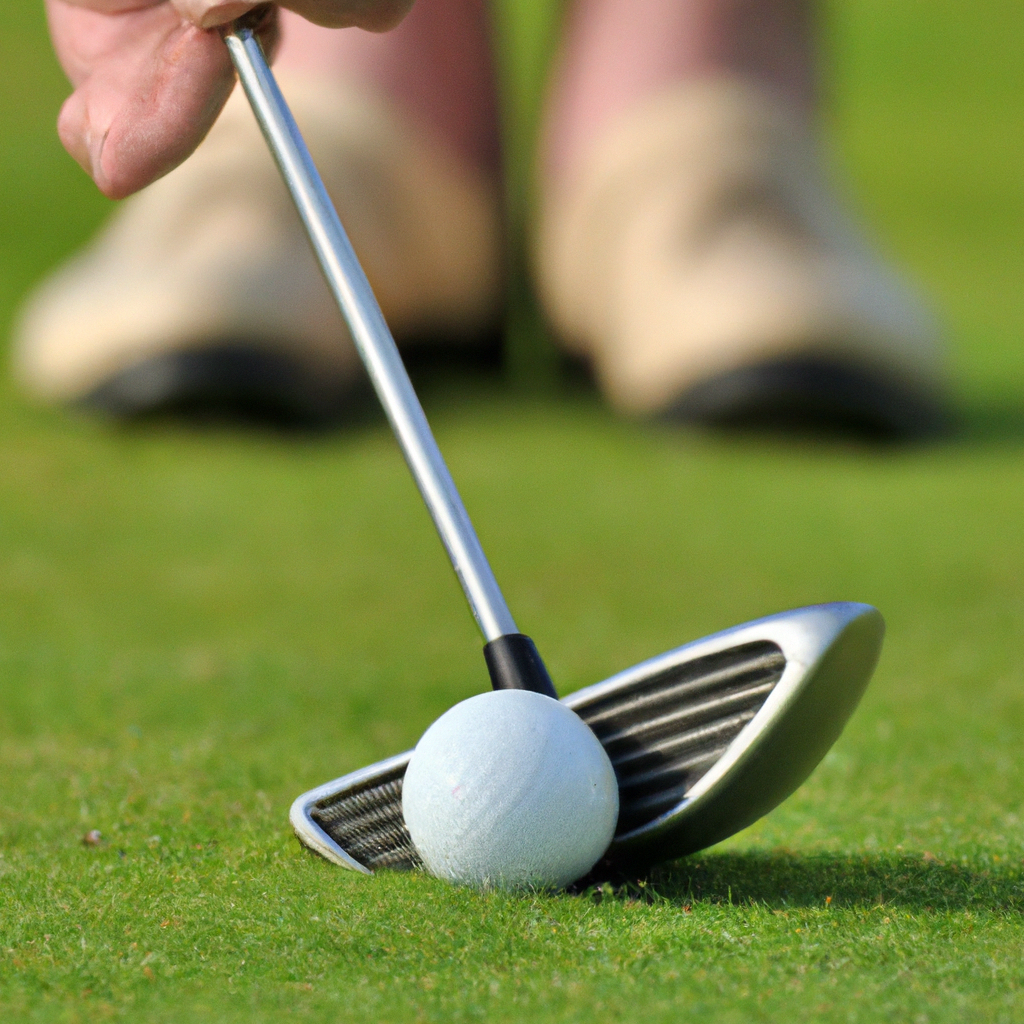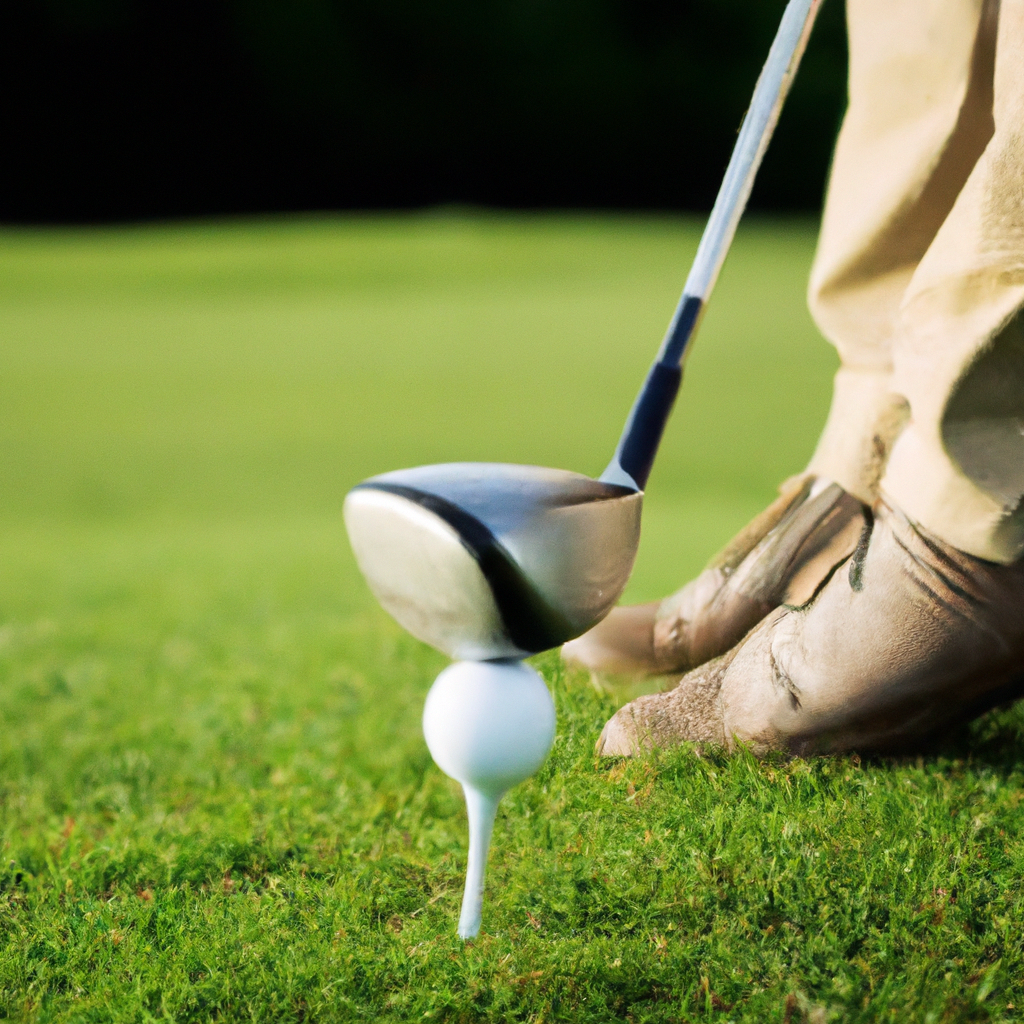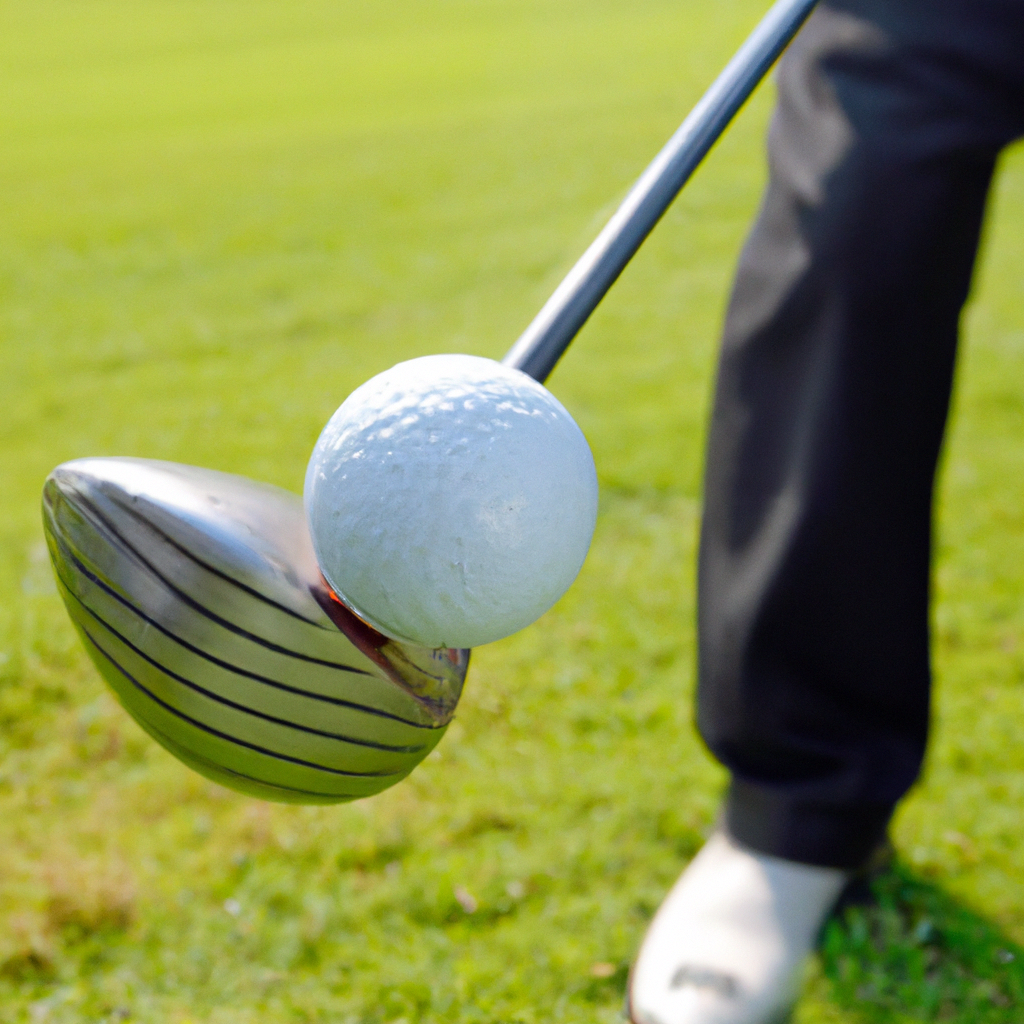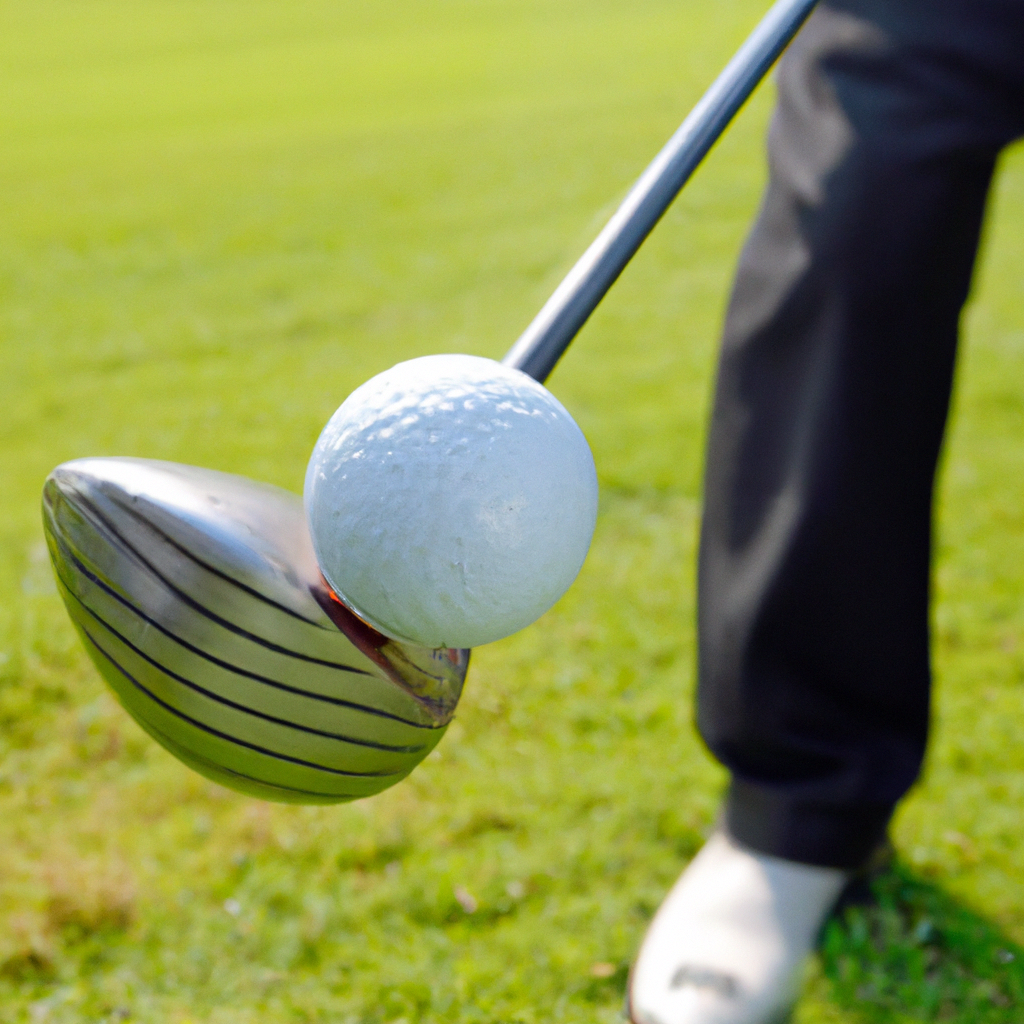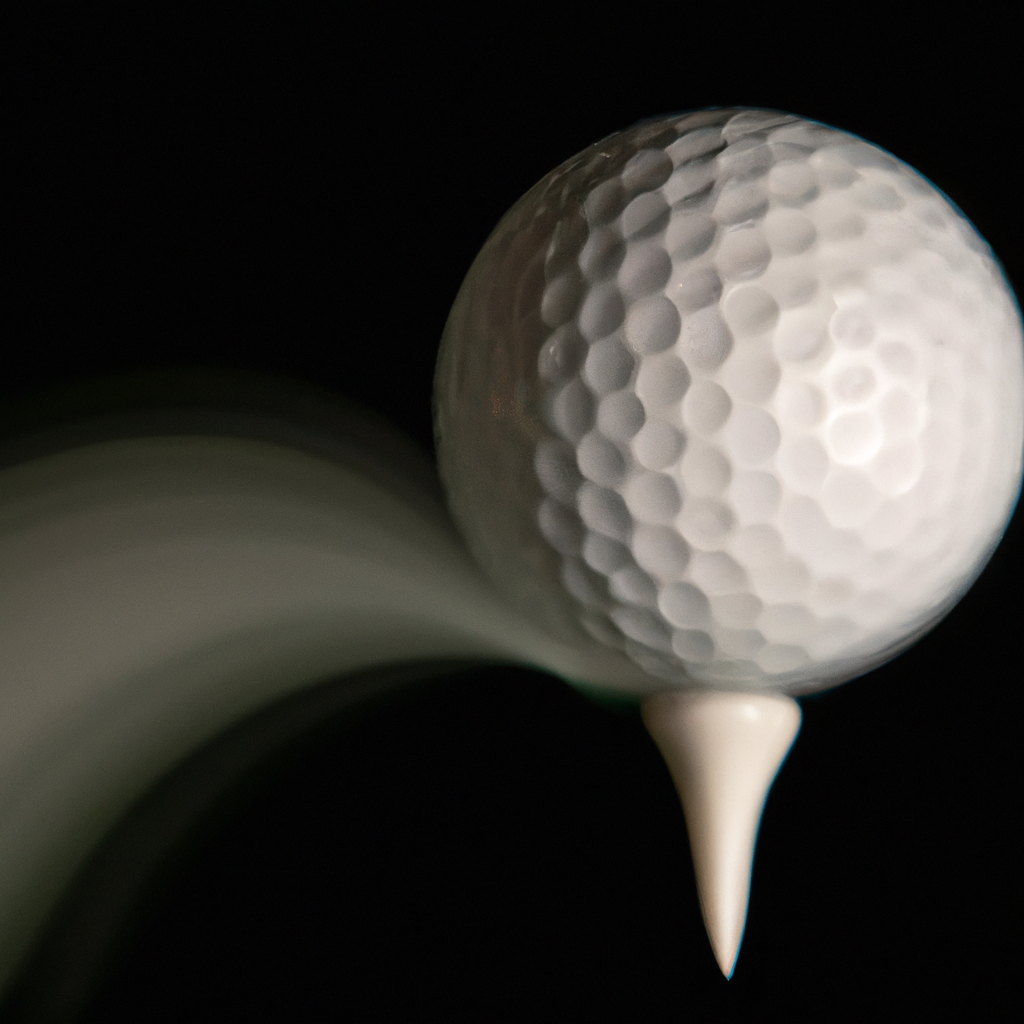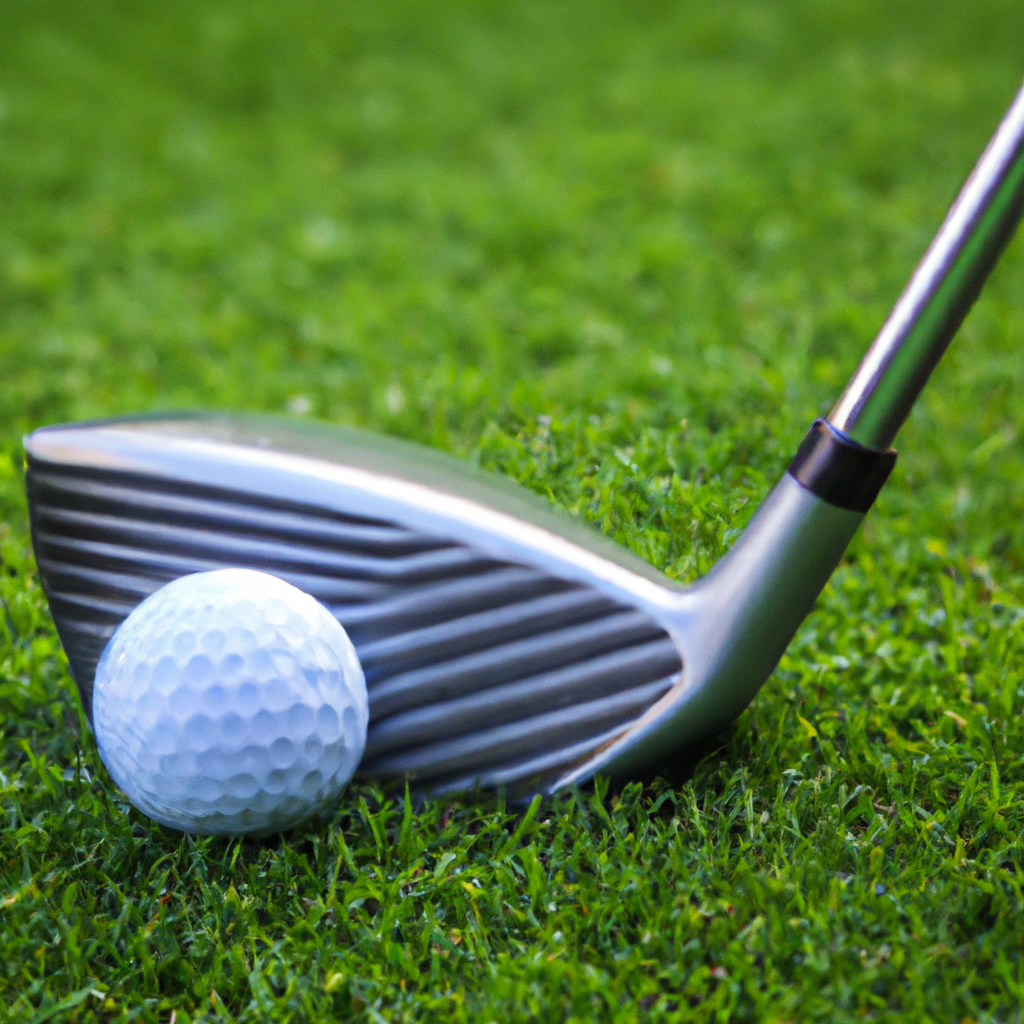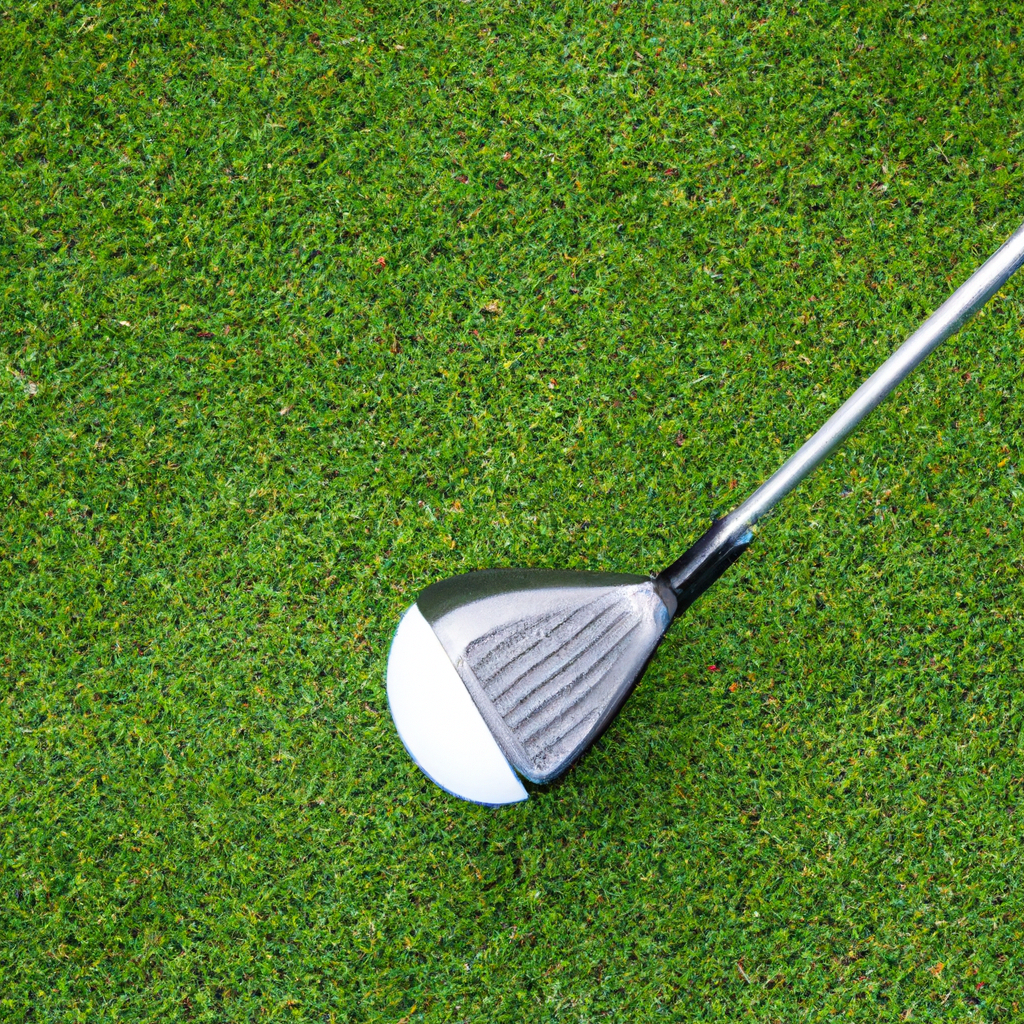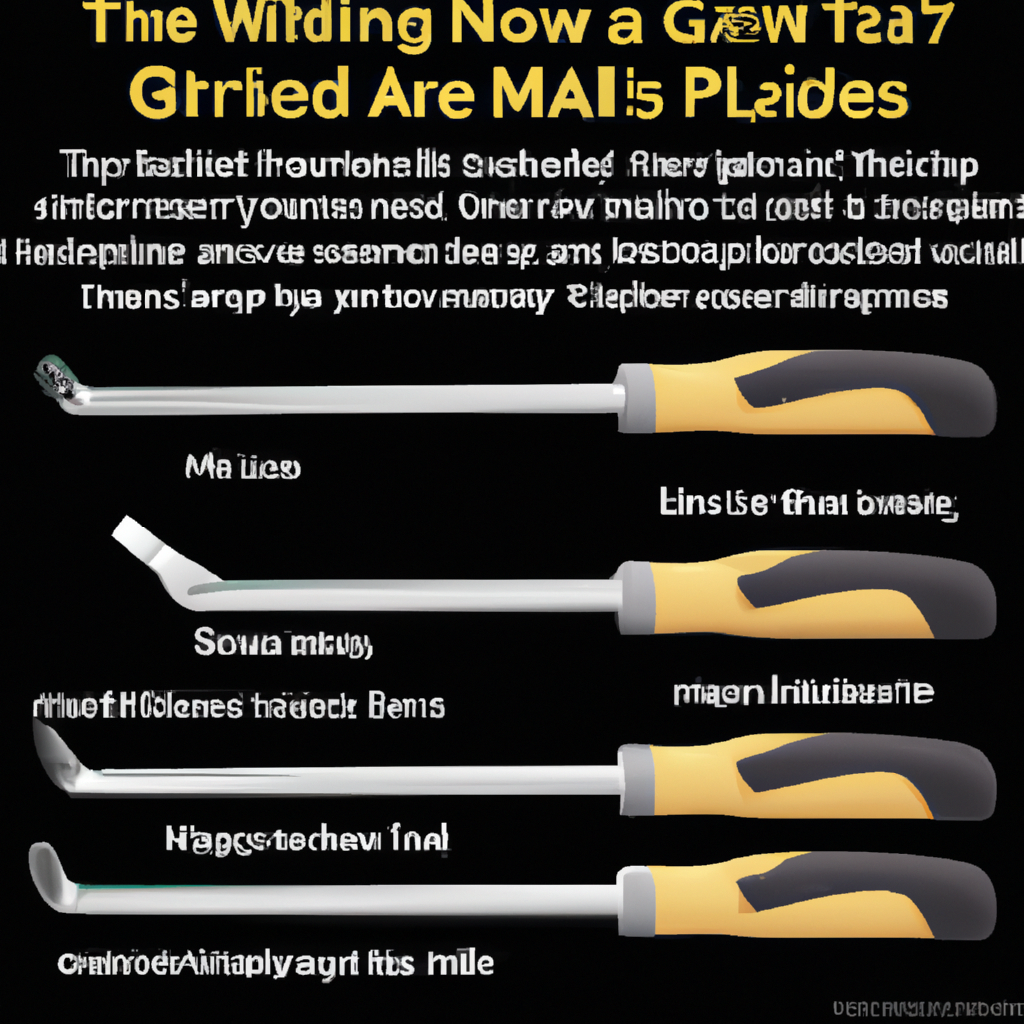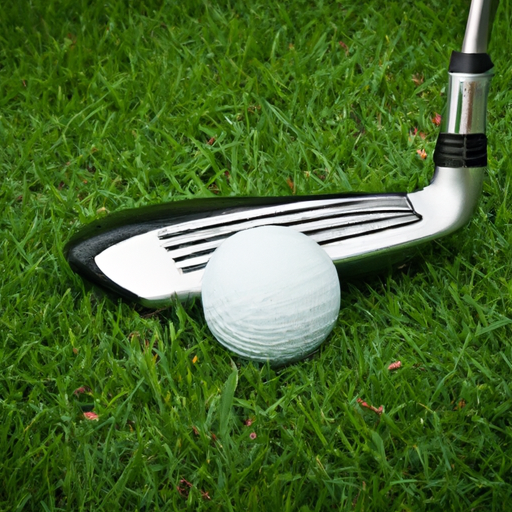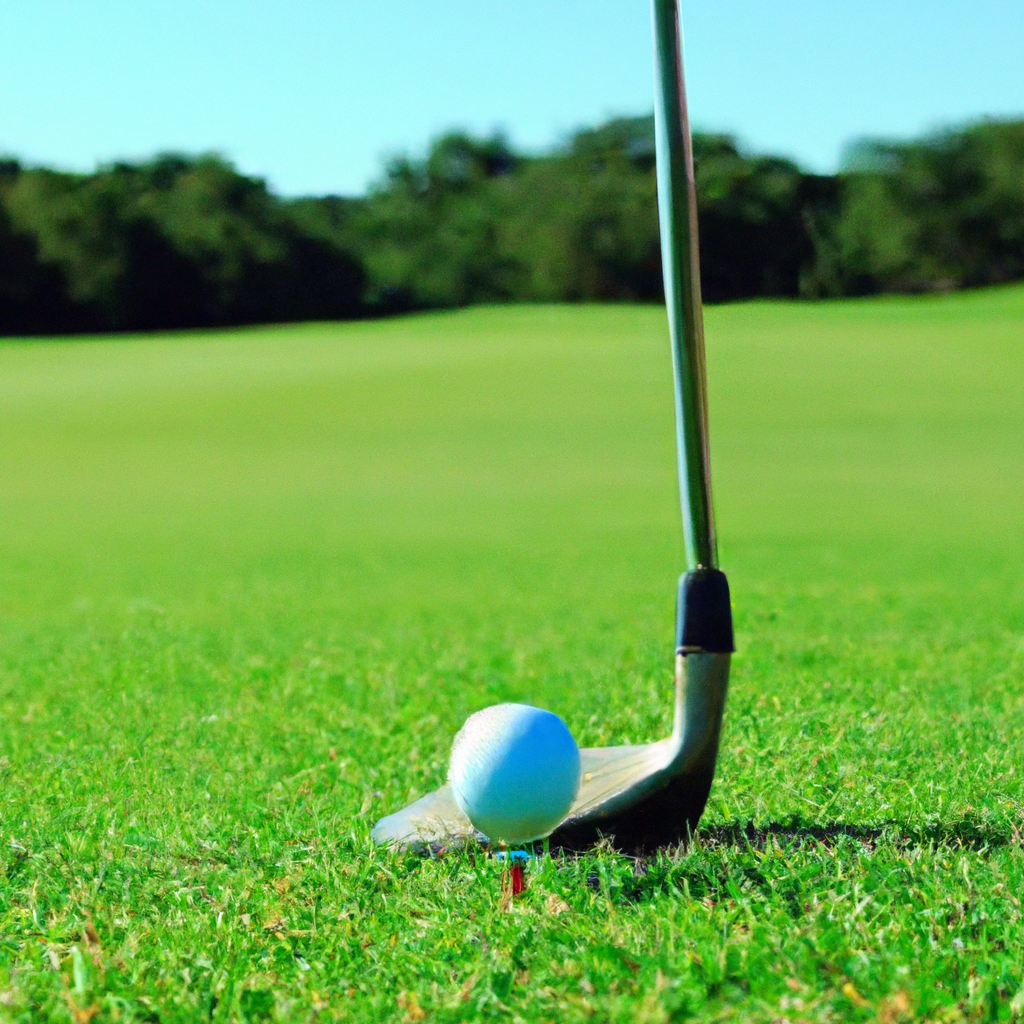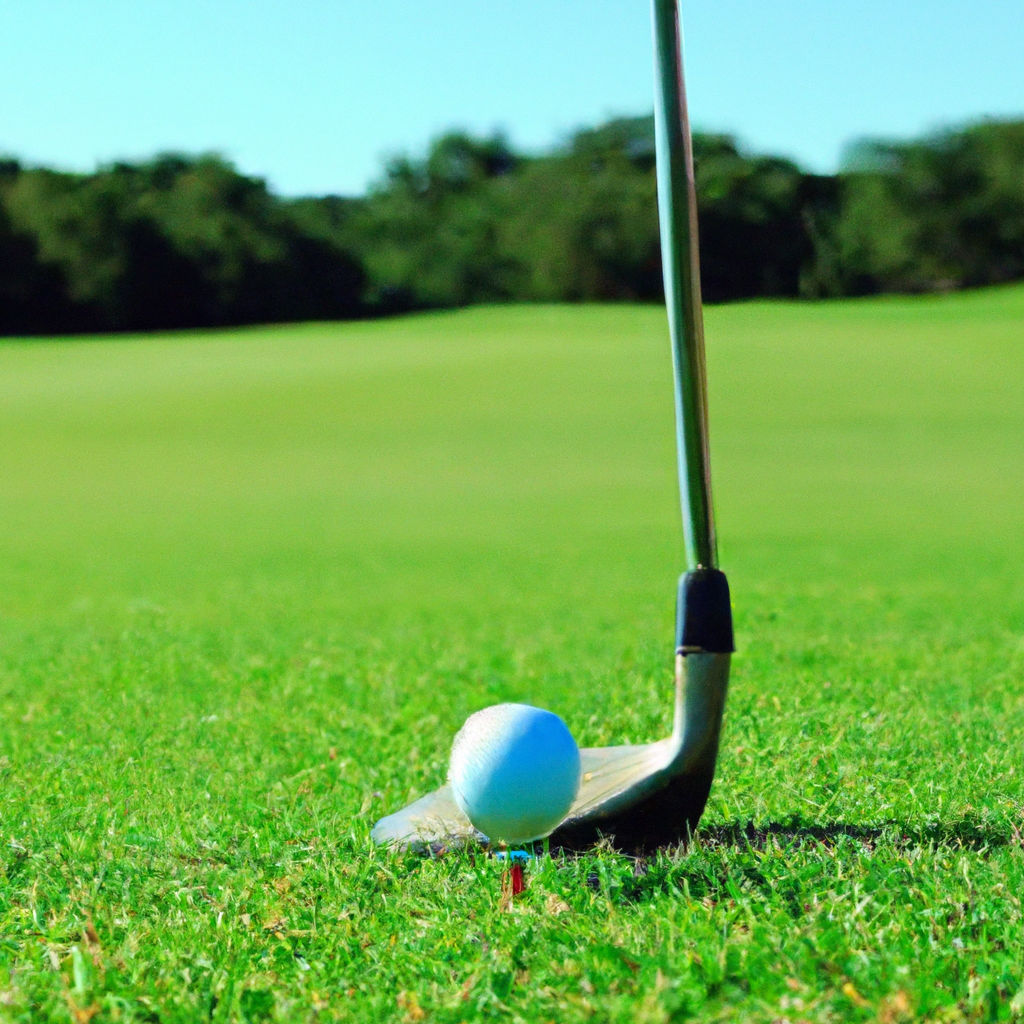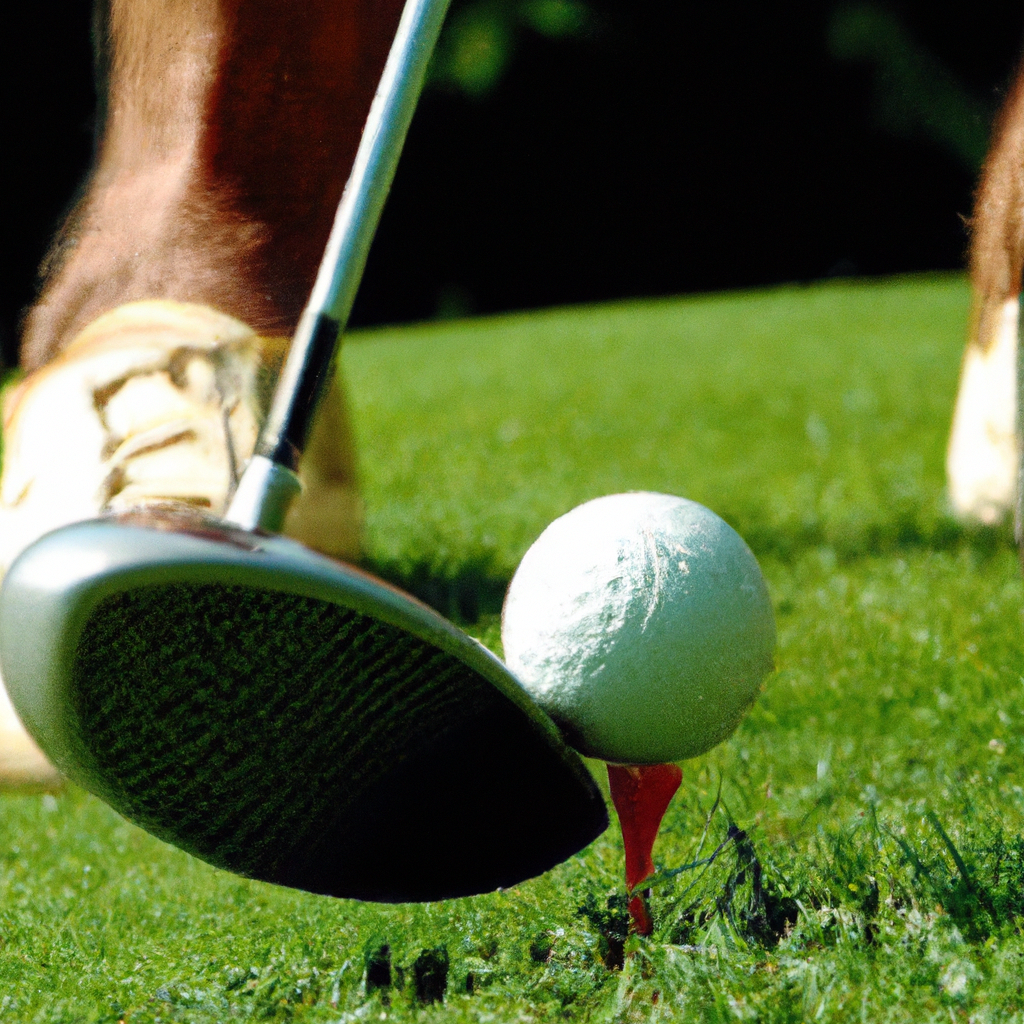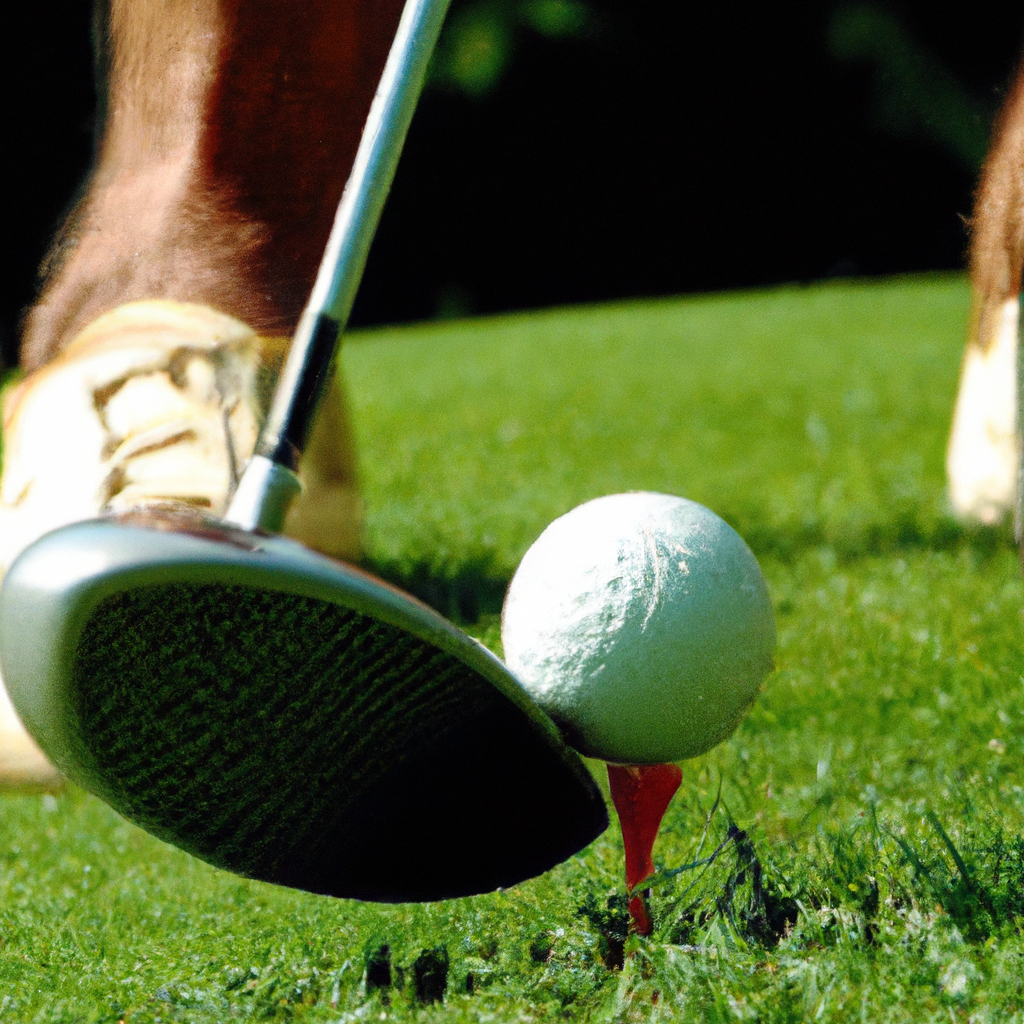If you’re a passionate golfer looking to improve your game, mastering the technique of hitting hybrid golf clubs is essential. These versatile clubs, designed to combine the best elements of both irons and fairway woods, can be a game-changer on the course. In this article, we’ll explore the key steps and tips to help you confidently and effectively hit hybrid golf clubs, elevating your performance to new heights. So, grab your clubs, get ready to dive into the world of hybrid golfing, and let’s get swinging!

Choosing the Right Hybrid Golf Club
Hybrid golf clubs have gained popularity in recent years due to their versatility and ease of use. When choosing the right hybrid golf club, it’s essential to consider a few factors. Understanding the loft and shaft length, as well as analyzing the clubhead design, will help you make an informed decision.
Understanding Hybrid Golf Clubs
Hybrid golf clubs are designed to combine the best features of both irons and woods. They typically have a smaller, more compact head compared to a wood but have a longer shaft and more forgiveness than an iron. These features make them a great option for players looking for distance and accuracy.
Determining the Loft and Shaft Length
The loft of a hybrid golf club is an essential factor to consider. Hybrids with higher lofts, such as 18 to 21 degrees, are suitable for replacing long irons and hitting high shots. On the other hand, hybrids with lower lofts, around 15 degrees, are ideal for replacing fairway woods and hitting longer shots from the tee.
When it comes to the shaft length, it’s crucial to find the right balance between control and distance. A longer shaft can provide more clubhead speed and distance, but it may sacrifice control. Conversely, a shorter shaft may offer more accuracy but limit your distance.
Analyzing Clubhead Design
The design of the clubhead plays a vital role in the performance of a hybrid golf club. Look for a clubhead design that inspires confidence at address and promotes a smooth, consistent swing. Consider factors such as the size, shape, and weight distribution of the clubhead.
A larger clubhead can provide more forgiveness on off-center hits, while a smaller clubhead may offer more versatility and control. Additionally, the weight distribution of the clubhead can affect the club’s launch angle and trajectory. Finding a hybrid with the right balance between forgiveness and control will enhance your overall performance on the course.
Gripping the Hybrid Golf Club
Proper hand placement and grip pressure are essential aspects of gripping a hybrid golf club. Mastering these techniques will help you achieve better control and consistency in your shots.
Proper Hand Placement
To grip a hybrid golf club correctly, start by placing your non-dominant hand (left hand for right-handed players) on the club’s grip. Position your hand slightly to the side of the club so that the grip runs diagonally across your palm. Your thumb should be on top of the grip, pointing towards the clubhead.
Next, place your dominant hand (right hand for right-handed players) below your non-dominant hand, making sure both hands are connected. Your dominant hand’s thumb should fit snugly into the lifeline of your non-dominant hand.
Finding the Correct Grip Pressure
The grip pressure plays a crucial role in controlling the clubface and generating power in your swing. Ideally, you should maintain a firm grip, but avoid gripping the club too tightly, as it can hinder your swing and result in a loss of feel.
On a scale of 1 to 10, where 1 is the lightest grip and 10 is the tightest grip, aim for a grip pressure of around 5 or 6. This allows for a comfortable yet controlled grip that promotes a smooth and powerful swing.
Addressing the Ball
How you address the ball sets the foundation for a successful swing. Paying attention to your stance and alignment, as well as the ball position and clubface alignment, will help you consistently strike the ball cleanly.
Stance and Alignment
Start by positioning your feet shoulder-width apart, with your weight evenly distributed between them. Bend your knees slightly and tilt forward from your hips to create an athletic posture. This posture will provide stability and allow for an efficient transfer of power throughout your swing.
Ensure that your body is aligned parallel to the target line, with your feet, knees, hips, and shoulders all pointing in the same direction. Aligning yourself properly to the target line will enable you to swing the club on the desired path and increase the chances of hitting the ball straight.
Ball Position
The ball position for hybrid clubs varies depending on the shot you want to execute. For most standard shots, position the ball slightly forward of center in your stance. This allows for clean contact with the ball and optimal launch conditions.
Experiment with ball positions during your practice sessions to find the ideal placement that suits your swing and shot shape preferences. Moving the ball slightly back in your stance can help you hit lower shots, while moving it forward can promote higher shots.
Clubface Alignment
Before swinging, ensure that the clubface is square to the target line. One common alignment check is to align the leading edge of the clubface parallel to the target line. This promotes a straighter ball flight and minimizes the chance of slices or hooks.
Take a moment to align the clubface properly with your target before starting your swing. Consistently addressing the ball with a square clubface will lead to more accurate shots.

Performing the Swing
A smooth and well-executed swing is crucial to achieve optimal results with your hybrid golf club. Paying attention to maintaining a smooth tempo, establishing the correct swing path, and executing proper weight transfer and balance will help you strike the ball with power and accuracy.
Maintaining a Smooth Tempo
A smooth tempo in your swing allows for better rhythm and control. Focus on a 3:1 tempo ratio, where the backswing takes three counts and the downswing takes one count. This tempo will help you maintain proper sequencing and generate maximum power through impact.
Avoid rushing your swing or trying to hit the ball too hard. Instead, focus on staying relaxed and swinging smoothly, allowing the club to do the work.
Establishing the Correct Swing Path
The swing path refers to the direction in which the clubhead travels during the swing. To hit successful shots with your hybrid club, establish an inside-out swing path. This means that the clubhead should approach the ball from slightly inside the target line and then move towards the target through impact.
Visualize a shallow arc as you swing, with the clubhead tracing a path just above the ground. This swing path promotes a powerful and accurate strike on the ball.
Weight Transfer and Balance
Proper weight transfer and balance are essential for generating power and maintaining control throughout your swing. As you swing back, transfer your weight onto your back foot, and then shift it back onto your front foot as you swing through the ball. This transfer of weight allows you to generate maximum power and create a smooth and efficient swing.
Maintaining balance throughout your swing is crucial for accuracy. Avoid excessive weight shifts or leaning too far in any direction. Instead, stay centered and balanced to consistently strike the ball cleanly.
Utilizing the Hybrid Club in Specific Situations
Hybrid clubs are incredibly versatile and can be a valuable asset in various on-course situations. Learning how to use them effectively from different lies, such as fairway shots, rough shots, and as a replacement for long irons, can greatly improve your game.
Fairway Shots
When faced with a fairway shot, a hybrid club can provide an excellent alternative to long irons or fairway woods. The high loft and forgiveness of hybrid clubs make them well-suited for launching the ball high and landing it softly on the fairway.
To hit a successful fairway shot with a hybrid club, focus on sweeping the ball off the turf. Position the ball slightly forward in your stance, maintain a smooth tempo, and ensure a shallow approach to the ball. This approach will allow the club to glide through the grass and make clean contact with the ball, resulting in a high and accurate shot.
Rough Shots
The forgiving nature of hybrid clubs makes them particularly effective in navigating through thick rough. Due to their weight and design, hybrid clubs can power through the rough and make clean contact with the ball, unlike irons that may get stuck or snagged.
When faced with a shot from the rough, position the ball slightly back in your stance to take advantage of the club’s weight. Take a slightly steeper swing, ensuring the clubhead gets through the thick grass and strikes the ball cleanly. This technique will help you escape the rough and advance the ball towards your target.
Long Iron Replacement
One of the primary purposes of a hybrid club is to replace long irons. Long irons can be challenging to hit and often result in inconsistent shots. Hybrid clubs, with their forgiving nature and lower center of gravity, provide an excellent alternative for players struggling with long irons.
When using a hybrid club as a replacement for long irons, focus on making a smooth and controlled swing. Position the ball slightly forward in your stance, similar to a fairway shot, and maintain a shallow approach to the ball. The hybrid’s larger clubhead and increased forgiveness will help you launch the ball high in the air and maintain accuracy.
Troubleshooting Common Issues
As with any golf club, there are common issues that players may encounter when using hybrid clubs. Understanding these issues and learning how to troubleshoot them can greatly improve your performance with hybrid clubs.
Slicing the Ball
Slicing, or a shot that curves excessively from left to right for right-handed players (or right to left for left-handed players), is a common issue when using hybrid clubs. To reduce or eliminate slicing, focus on a few key fundamentals.
First, check your grip. Ensure that your grip is not too weak, meaning that your hands are rotated too far to the left (right for left-handed players). A stronger grip can help square the clubface at impact and minimize slicing.
Next, pay attention to your swing path. A slicing shot is often the result of an out-to-in swing path. To correct this, visualize swinging from inside the target line. Practice swinging along an imaginary inside-out path, ensuring that the clubhead travels towards the target through impact.
Hooking the Ball
Hooking the ball, or a shot that curves excessively from right to left for right-handed players (or left to right for left-handed players), is another common issue with hybrid clubs. Rectifying this issue requires focusing on your setup and swing mechanics.
First, check your alignment. Ensure that your body is not aiming too far to the right of the target (left for left-handed players) as this can promote a hooking swing path. Align yourself parallel to the target line to help ensure a straighter ball flight.
Next, evaluate your swing path. A hooking shot is often the result of an inside-to-out swing path. To correct this, visualize swinging from outside the target line. Focus on swinging along an imaginary outside-in path, which helps square the clubface and minimizes the chances of hooking the ball.
Low Ball Flight
If you’re experiencing consistently low ball flights with your hybrid club, it might be due to a few factors, including ball position, angle of attack, and swing speed.
First, check your ball position in your stance. If the ball is positioned too far back, it can lead to a lower launch angle and a subsequent low ball flight. Experiment with moving the ball slightly forward in your stance to encourage a higher launch.
Next, evaluate your angle of attack. A steep angle of attack can result in a low ball flight. Focus on sweeping the ball off the turf rather than hitting down on it aggressively. This shallower angle of attack will help launch the ball higher into the air.
Lastly, consider your swing speed. A slower swing speed can result in a lower ball flight. If you’re struggling with a consistently low ball flight, consider working on improving your swing speed through strength and flexibility exercises or seeking professional instruction.
High Ball Flight
On the other end of the spectrum, a consistently high ball flight with your hybrid club can also be problematic, as it may sacrifice distance and control. Similar to a low ball flight, several factors can contribute to a high ball flight.
First, check your ball position. If the ball is positioned too far forward in your stance, it can lead to a higher launch angle and too much height on your shots. Experiment with slightly moving the ball back in your stance to encourage a more penetrating ball flight.
Next, evaluate your angle of attack. A shallow angle of attack can result in a higher ball flight. Focus on hitting down on the ball slightly to reduce the launch angle and promote a more controlled ball flight.
Lastly, consider your clubhead’s loft. If your hybrid club has higher loft options, it may be worth considering a hybrid with a lower loft to help bring down the ball flight. Adjusting the loft can help optimize the trajectory and make it more suitable for your desired shot shape and distance.
Fat Shots
Fat shots, where the club strikes the ground before the ball, can be frustrating and result in poor contact and distance. Addressing a few key factors can help reduce the occurrence of fat shots with your hybrid club.
First, evaluate your ball position. Placing the ball too far back in your stance can cause the clubhead to strike the ground before making contact with the ball. Experiment with moving the ball slightly forward in your stance to ensure cleaner contact.
Next, focus on maintaining a consistent swing tempo. Rushing your swing or attempting to hit the ball too hard can disrupt your timing and lead to fat shots. Stay relaxed, maintain a smooth tempo, and allow the club to do the work.
Lastly, pay attention to your weight transfer and balance. A proper weight transfer is essential for striking the ball cleanly. Avoid excessive weight shifts or leaning back during your swing, as this can lead to fat shots. Instead, stay centered, maintain a balanced posture, and focus on a downward strike on the ball.
Practicing with Hybrid Golf Clubs
To improve your proficiency with hybrid golf clubs, regular practice sessions are essential. Incorporating range sessions, on-course practice, and visualization techniques into your practice routine will greatly benefit your overall performance.
Range Sessions
Range sessions provide an opportunity to focus on specific aspects of your hybrid club play. They allow you to refine your swing mechanics, experiment with different shot shapes, and develop a consistent feel for your club. During range sessions, consider the following practice drills:
- Alignment and aiming exercises: Set up alignment poles or visual markers on the range to ensure that your body is aligned parallel to the target line.
- Ball position drills: Practice hitting shots with the ball positioned at various points in your stance to understand the impact on the ball flight.
- Swing tempo drills: Use a metronome or count in your head to establish a consistent 3:1 tempo ratio for your swings.
- Target-oriented drills: Set specific targets or practice hitting to specific yardages to develop accuracy and distance control.
On-Course Practice
While range sessions allow for focused practice, on-course practice enables you to apply your skills in a real playing environment. During practice rounds or casual play, focus on using your hybrid club strategically in various situations. Experiment with different shots, course management strategies, and decision-making processes. On-course practice will help you gain confidence, adaptability, and a better understanding of the strengths and capabilities of your hybrid clubs.
Visualization Techniques
Visualization can be a powerful tool to improve your performance with hybrid clubs. Before each shot, take a moment to visualize the desired shot shape, trajectory, and landing spot. Imagine the ball soaring through the air and landing precisely where you want it to. Visualization helps train your mind to focus on the desired outcome and enhances your ability to execute the shot effectively.
Understanding Distance Gaps
To optimize your performance with hybrid clubs, understanding the distance gaps between your clubs is crucial. Determining carry yardages and controlling shot distances will help you choose the right club for each situation and improve your scoring ability.
Determining Carry Yardages
To determine the carry yardages with your hybrid clubs, record the distance each club carries during range sessions or on-course play. Focus on hitting shots with a smooth tempo and your normal swing. Take note of the average distance for each club and create a reference guide for yourself.
To fine-tune your carry yardages, consider factors such as temperature, wind conditions, and course elevation. These variables can impact the ball’s flight and distance, so adjust your club selection accordingly to compensate for any variations from your normal distances.
Controlling Shot Distances
Controlling shot distances with your hybrid clubs is a valuable skill that allows you to adapt to different situations and pin positions. To improve your distance control, consider the following techniques:
Partial swings: Experiment with taking shorter backswings and follow-throughs to produce shorter shots. This technique allows you to control the distance by altering the length of your swing while maintaining consistent tempo and control.
Grip pressure: Adjusting your grip pressure can also help control shot distances. A slightly firmer grip can result in less clubhead rotation and a shorter ball flight, while a lighter grip can promote more speed and distance.
Swing speed: Practice varying your swing speed with your hybrid clubs to understand their impact on shot distances. Experiment with swinging more aggressively or more smoothly to gauge the changes in ball flight and distance.
Improving Accuracy with Hybrid Clubs
While hybrid clubs offer forgiveness and distance, developing accuracy is equally important for consistent performance. Improving your clubface control, understanding shot dispersion patterns, and practicing proper alignment will enhance your accuracy with hybrid clubs.
Clubface Control
Clubface control is a critical aspect of accurate ball striking. Pay attention to your grip and ensure that your hands are not too passive or too active during the swing. A neutral grip allows for better clubface control at impact.
Additionally, focus on maintaining a square clubface throughout the swing. Practice drills that help develop a consistent clubface position at address and throughout the swing. With proper clubface control, you’ll be able to consistently strike the ball with the intended shot shape and direction.
Shot Dispersion Patterns
Understanding your shot dispersion patterns can provide valuable insights into your game and help you make better strategic decisions on the course. During range sessions or on-course play, pay attention to the direction and distance variations of your hybrid shots.
Take note of the dispersion patterns for different swing speeds, shot shapes, and swing tendencies. This understanding will allow you to better assess potential risks and select the appropriate club for each situation.
Alignment
Proper alignment is fundamental to accuracy with hybrid clubs. Ensure that your body is parallel to the target line during the setup and that the clubface is square to the target. Deviations from proper alignment can lead to off-target shots and inconsistency.
Practice alignment drills on the range and during practice rounds. Use alignment rods or visual markers to establish consistent alignment habits. The more comfortable you become with aligning yourself correctly, the greater your chances of hitting accurately with your hybrid clubs.
Fine-Tuning Your Hybrid Golf Club Performance
To optimize your hybrid golf club performance, consider making club adjustments and exploring custom fitting options. These steps will help you personalize your equipment to suit your swing and playing style.
Club Adjustments
Hybrid golf clubs often come with adjustable features that allow you to fine-tune their performance. Explore the settings on your hybrid club, such as loft, lie angle, and weight placement, to find the optimal configuration for your game.
Experiment with different loft settings to determine the ideal launch conditions for your desired shot shape and distance. Adjust the lie angle to ensure that the sole of the club sits flush with the ground at impact. Lastly, experiment with weight placement to influence the club’s forgiveness, trajectory, and overall performance.
Consult the manufacturer’s instructions or seek professional guidance to make club adjustments properly and effectively.
Custom Fitting
Custom fitting is an excellent option to maximize your hybrid club’s performance. A professional club fitter can analyze your swing characteristics, such as swing speed, tempo, angle of attack, and shot tendencies. They can then recommend the optimal shaft, loft, and clubhead design for your hybrid clubs.
During a custom fitting session, you’ll have the opportunity to test various combinations and receive expert advice tailored to your game. Taking advantage of custom fitting ensures that your hybrid clubs are perfectly suited to your swing, promoting better performance, distance, and accuracy on the course.
In conclusion, mastering the technique of how to hit hybrid golf clubs entails understanding the club’s features, adopting proper hand placement and grip pressure, addressing the ball with precision, executing a smooth swing, and utilizing them in different on-course situations. Troubleshooting common issues, practicing diligently, understanding distance gaps, improving accuracy, and fine-tuning your hybrid golf club’s performance are all crucial aspects of becoming proficient with hybrid clubs. By following these guidelines, you’ll be well-equipped to make the most out of your hybrid golf clubs and elevate your game on the course.

